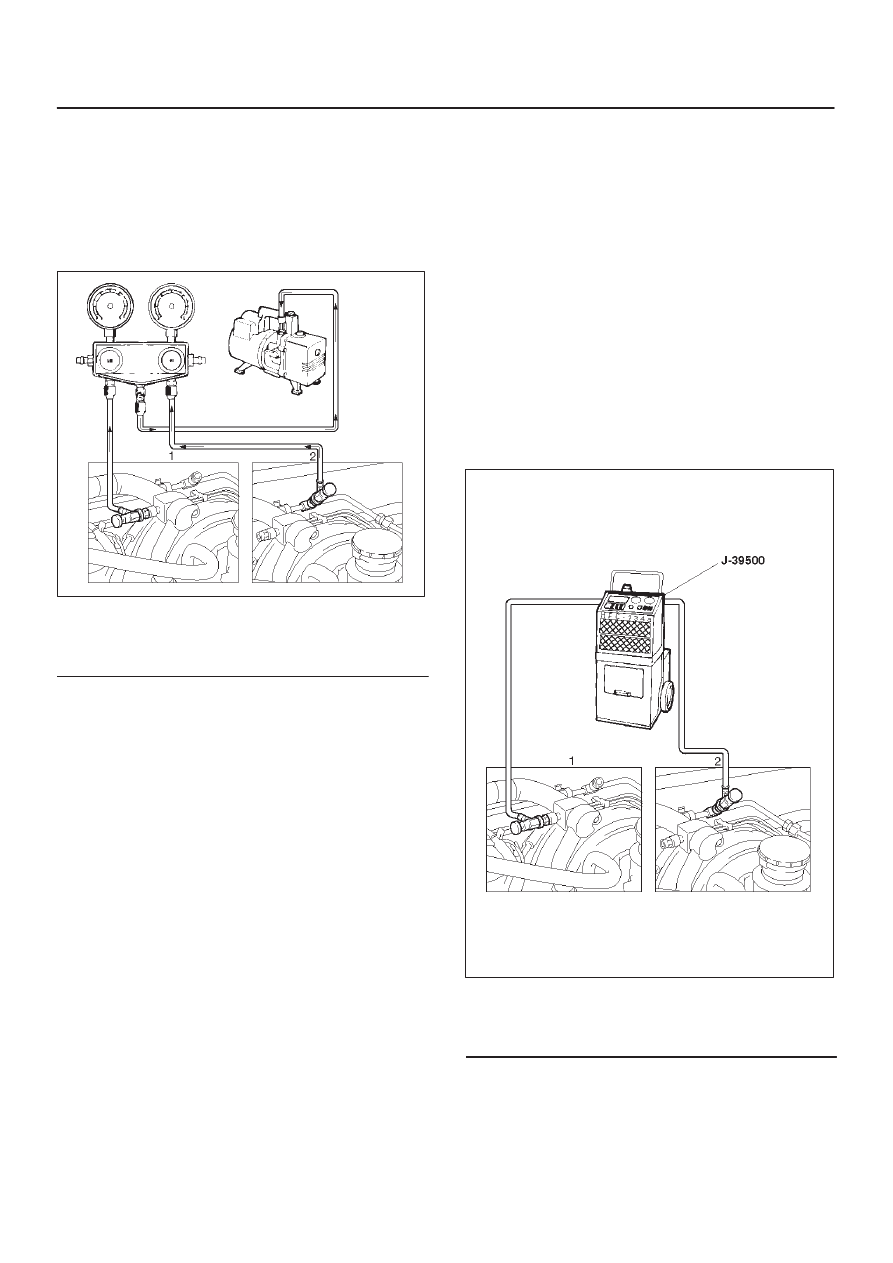Isuzu Amigo / Axiom / Trooper / Rodeo / VehiCross. Manual - part 16

HEATING, VENTILATION AND AIR CONDITIONING (HVAC) 1A–35
Refrigerant Recycling
Recycle the refrigerant recovered by J-39500
(ACR
4
:HFC-134a Refrigerant Recovery / Recycling /
Recharging / System) or equivalent.
For the details of the actual operation, follow the steps in
the ACR
4
(or equivalent) Manufacturer’s Instructions.
Evacuation of The Refrigerant System
901R100023
Legend
(1) Low Side
(2) High Side
NOTE: Explained below is a method using a vacuum
pump. Refer to the ACR
4
(or equivalent) manufacturer’s
instructions when evacuating the system with a ACR
4
(or
equivalent).
Air and moisture in the refrigerant will cause problems in
the air conditioning system. Therefore, before charging
the refrigerant, be sure to evacuate air and moisture thor-
oughly from the system.
1. Connect the gauge manifold.
D
High-pressure valve (HI) — Discharge-side.
D
Low-pressure valve (LOW) — Suction-side.
2. Discharge and recover the refrigerant.
3. Connect the center hose of the gauge manifold set to
the vacuum pump inlet.
4. Operate the vacuum pump, open shutoff valve and
then open both hand valves.
5. When the low-pressure gauge indicates
approximately 750 mmHg (30 inHg), continue the
evacuation for 5 minutes or more.
6. Close both hand valves and stop the vacuum pump.
7. Check to ensure that the pressure does not change
after 10 minutes or more.
D
If the pressure changes, check the system for
leaks.
D
If leaks occur, retighten the refrigerant line
connections and repeat the evacuation steps.
8. If no leaks are found, again operate the vacuum pump
for 20 minutes or more. After confirming that the
gauge manifold pressure is at 750 mmHg (30 inHg),
close both hand valves.
9. Close positive shutoff valve. Stop the vacuum pump
and disconnect the center hose from the vacuum
pump.
Charging The Refrigerant System
There are various methods of charging refrigerant into the
air conditioning system.
These include using J-39500 (ACR
4
:HFC-134a
Refrigerant Recovery/Recycling/Recharging/System) or
equivalent and direct charging with a weight scale
charging station.
Charging Procedure
D
ACR
4
(or equivalent) Method
For the charging of refrigerant recovered by ACR
4
(or
equivalent), follow the manufacturer’s instruction.
901R100022
Legend
(1) Low Side
(2) High Side
D
Direct charging with a weight scale charging
station method
1. Make sure the evacuation process is correctly
completed.
2. Connect the center hose of the manifold gauge to the
weight scale.